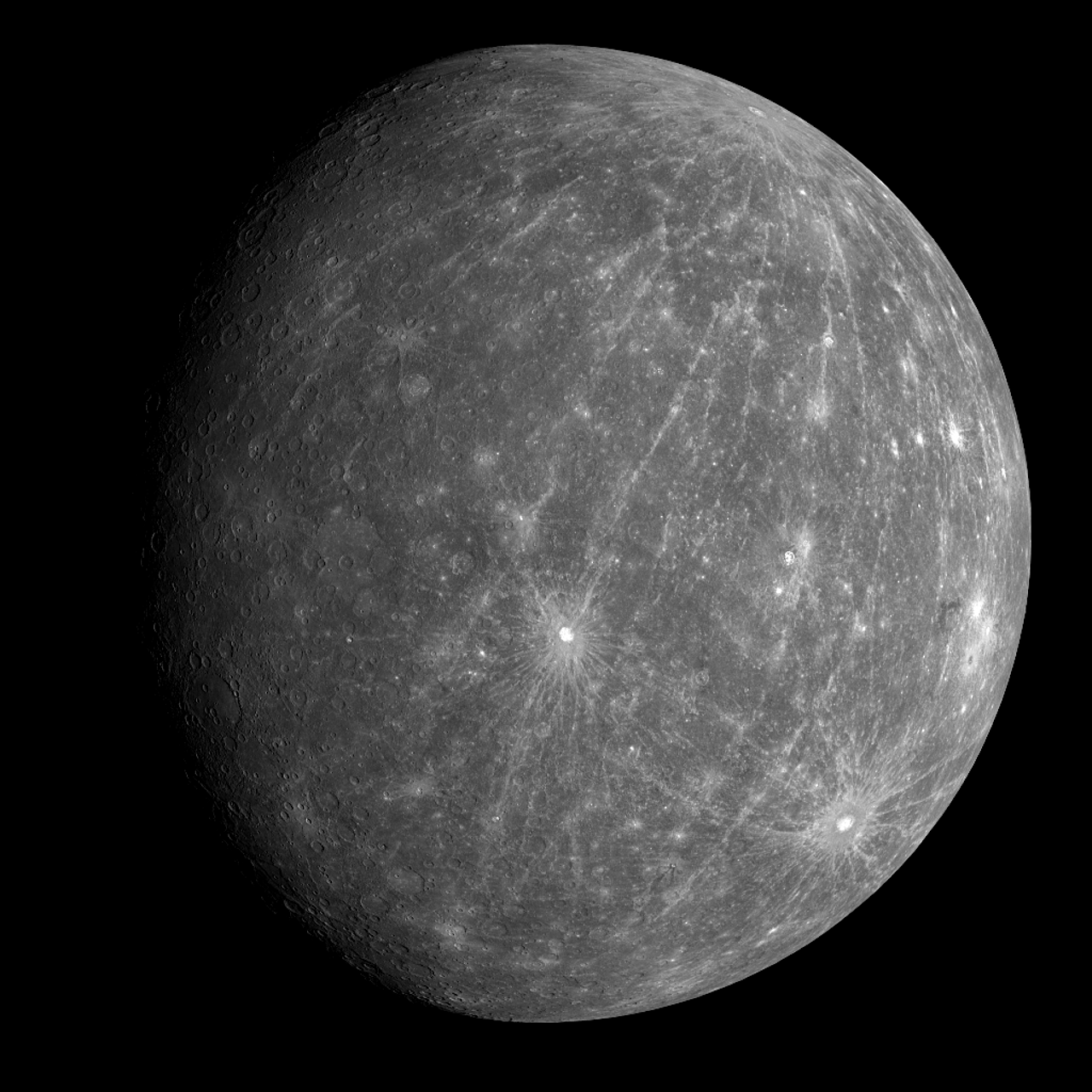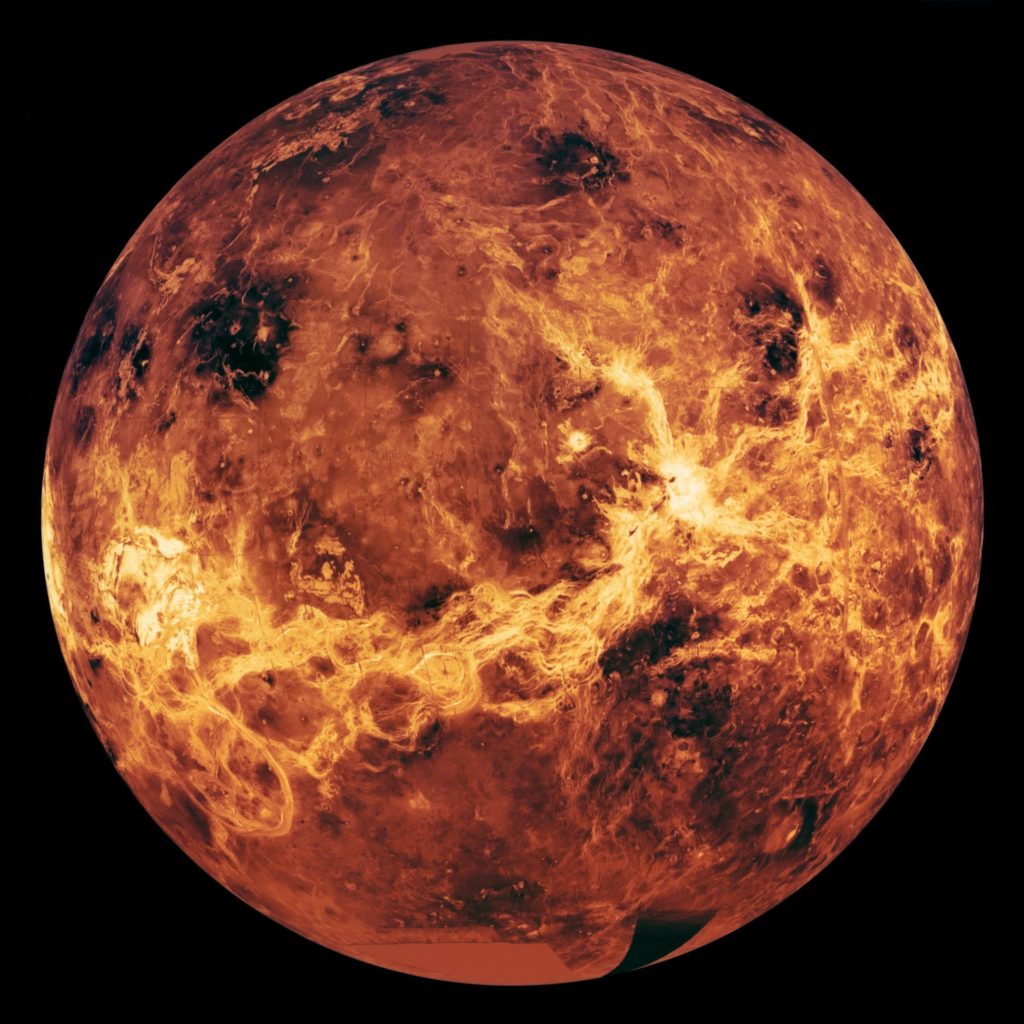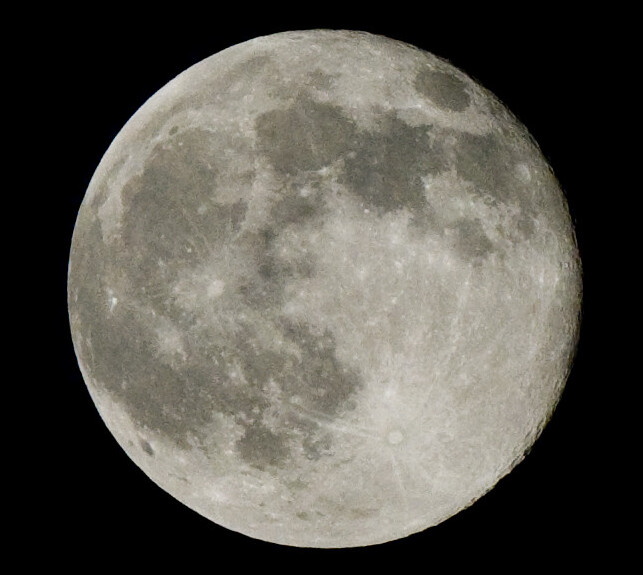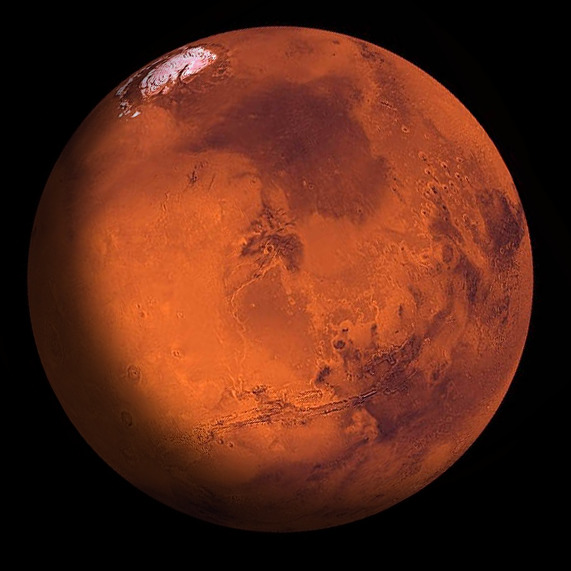The Inner Planets
The inner planets, or terrestrial planets, are the four planets closest to the Sun: Mercury, Venus, Earth, and Mars. These planets have a solid surface, they are composed of metal and rock, and are not as big as the outer planets.
Mercury

- The smallest and first planet in the solar system is Mercury.
- Mercury has no moons, no rings, and only has a diameter of 4,879 km.
- Mercury has the fastest orbit: the planet travels through space at nearly 29 miles (47 kilometer) per second. Due to its fast orbit Mercury was named after the Roman messenger god, Mercury.
- Mercury can be seen with naked eye, the first mentions of the planet was around 3000 BC by the Sumerians.
- Since Mercury is made up of heavy metals and rocks, it is the second densest planet after Earth.
- Mercury is around 58 million kilometers (36 million miles , 0.4 AU) away from the sun.
- And even though Mercury is the closest to the sun it's not the hottest plant in the solar system due to having no atmosphere. During the day the temperature can get up 800°F (430°C), While in the night it is a chilly -280°F (430°C).
- Mercury has the smallest tilt of all the planets, this results in no seasons.
- If a person weighed a 100 pounds on Earth then they would weigh only 38 pounds on Mercury.
- Believe it or not a single year lasts only 88 days on Mercury, but because of its slow rotation a day lasts twice as long. This means that if you could stand on the surface of Mercury, it would take an exhausting 176 Earth days for the Sun to rise, set, and rise again to the same place in sky just once!
Venus

- The second planet in the solar system is Venus and like Mercury, Venus has no moons or rings.
- It has a diameter of 12,103.6 km. Since Venus's size is almost equivalent to Earth's it's considered as Earth's twin sister.
- Venus is named after the Roman goddess of love and beauty.
- Back in ancient civilizations people used to believe that Venus was two distinct stars appearing at different times in the sky. However scientists deduced that when the orbit of Venus overtakes Earth's orbit, it changes from being visible at sunrise to being visible at sunset.
- One day on Venus is longer than one year; due to Venus's slow rotation, it takes 243 Earth-days to complete one rotation. The orbit however takes only 255 Earth-days, which makes a year on Venus shorter than a year on Earth. Venus is around 108,000,000 km (67,000,000 mi, 0.7 AU) away from the sun.
- Venus is the second brightest natural object (not including the sun) in the solar system, but not only that, it also holds the title of the hottest planet in the solar system.
- Now you may be asking, how is Venus the hottest planet if it isn't the closest to the sun? The answer for that is its atmosphere: Venus's atmosphere is made up of sulferic acid and carbon dioxide, these poisonous gases are not great for supporting life but great for holding in heat. These clouds are so dense that they reflect 60% of sunlight.
- This is why Venus is so hot; its atmosphere is so thick that when heat enters it keeps bouncing back reheating the planet, making it hot. Not only that, Venus is the same temperature at all times, day and night, it can reach up to a scalding 863°F (462°C), that's hot enough to melt lead!
Earth

- The third planet in the solar system is Earth. Earth does have one moon orbiting it. The moon has white/gray color, and is the brightest natural object in the solar system (not including the sun). The moon is so bright because the sun's light reflects off the moon and enters our eyes. The moon greatly influences the tides of the earth due to its gravitational pull. Without the moon our lives would be very different.
- The Earth is perfectly positioned in the solar system. It is 149.6 million km (91.691 million mi) away from the sun. If the Earth was anywhere other than its current location then we might have been dead.
- Due to the Earth's tilt combined with its perfect orbital path we have seasons.
- The Earth's interior consists of the continental crust, the oceanic crust, the mantle, the outer core, and the inner core.
- Earth has a diameter of 12,756 km (7,926 mi). And even though it's only the fifth planet in terms of mass and size, it is the densest planet of all.
- Formed somewhere around 4.54 billion years ago and the only known planet that supports life, Earth is the only planet that is not named after a mythological being, instead its name is derived from the Old English word "ertha" which means soil or ground.
- For 2,000 years ancient scientists belived that Earth was the center of the universe and all the other planets, including the sun, orbited Earth. However the famous scientist Copernicus, revealed the truth by publishing a model that depicted the sun at the center of the solar system.

- The reason why we are all alive is Earth's atmoshpere: The Earth's atmosphere which is made up of 78% nitrogen, 21% oxygen, and trace amounts of gases such as carbon dioxide and argon. This atmosphere protects all organisms from the sun's harmful ultraviolet rays. It also provides humans and animals with oxygen, and plants with carbon dioxide.
- 70% of the Earth's surface is covered by water, and its oceans are one of the most astonshing and complex things on the planet. There are billions of organisms that live underwater. The first life on earth developed in the oceans. As improbable as it may seem, we know more about the surface of the moon and mars combined, then about the deepest parts of the ocean.
- As we all know a year on Earth lasts 365 days. To be precise a years lasts 365.25 days due to there being an additional 1/4 of a day.
Mars

Sources
(To learn more you can click on them)





